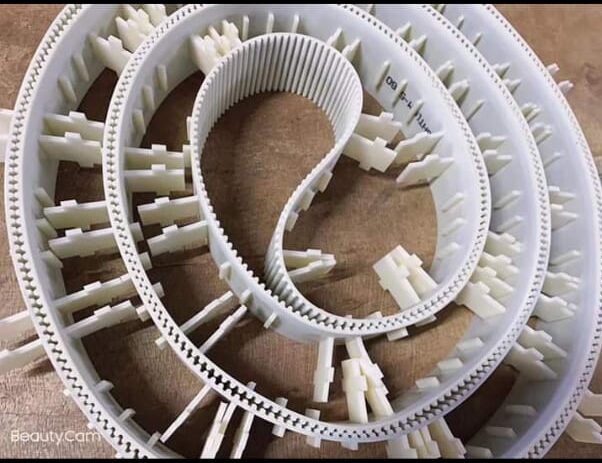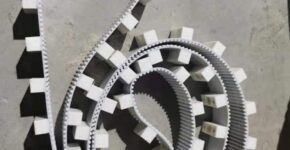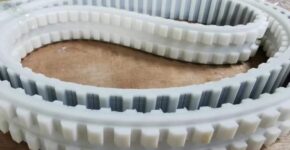


A timing belt, also known as a synchronous belt, is a type of belt designed to prevent slippage by maintaining precise synchronization between the driving and driven shafts. Timing belts use teeth molded onto their inner surface to engage with grooves on pulleys, ensuring accurate timing and positioning. This makes them essential in applications where precise movement and coordination are critical.
Lorem ipsum dolor sit amet, consectetur adipiscing elit. Ut elit tellus, luctus nec ullamcorper mattis. Dignissim veritatis explicabo eos eget cumque.


Tooth Profile:
HTD (High Torque Drive): Curvilinear profile for smooth engagement and high torque.
GT2, GT3, GT5: Trapezoidal profiles commonly used in 3D printers and CNC machines.
Materials:
Rubber: Flexible and wear-resistant.
Reinforced Fibers: Fiberglass, Kevlar, or steel for added strength.
Polyurethane: Excellent abrasion resistance and durability.
Construction:
Single-Ply: For light to medium loads.
Multi-Ply: For heavy-duty applications.
Timing belts operate by interlocking their teeth with corresponding grooves on pulleys or sprockets. This mechanism ensures precise increments of movement, critical for maintaining synchronization between connected shafts.
Key Components:
Pulleys/Sprockets: Match the belt’s teeth for engagement.
Tensioners: Maintain correct tension.
Idler Pulleys: Guide the belt and distribute load.
Precise Synchronization: Critical for applications requiring exact timing.
No Slippage: Maintains consistent speed and torque.
Quiet Operation: Quieter compared to chains or gears.
Low Maintenance: Requires minimal lubrication.
Lightweight and Flexible: Suitable for various applications.
Cost-Effective: Lower operational costs.
Limited Power Transmission: Unsuitable for very high torque applications.
Temperature Sensitivity: Performance may degrade under extreme conditions.
Wear and Tear: Teeth can wear over time, reducing precision.
Installation Precision: Requires accurate alignment and tensioning.
Limited Distance: Best for short-distance applications.